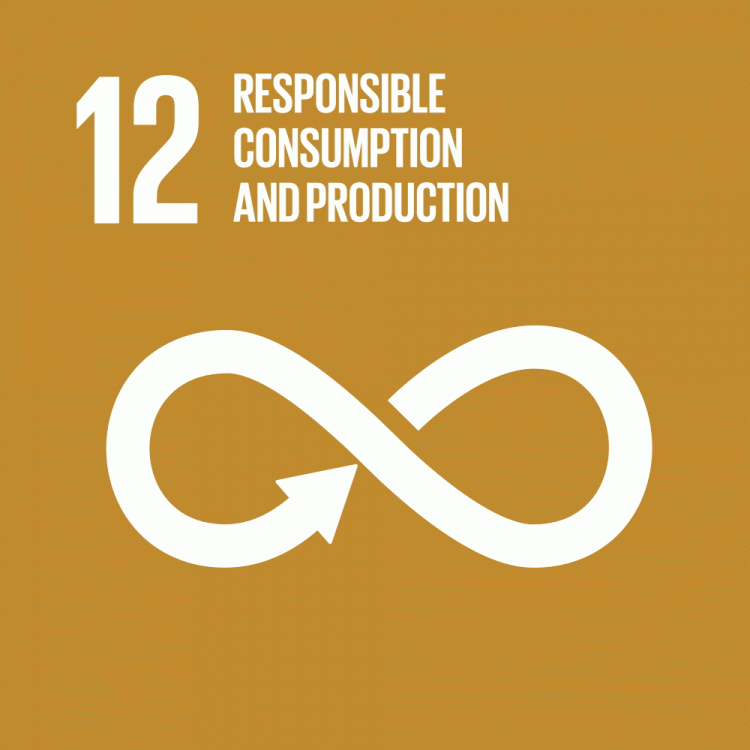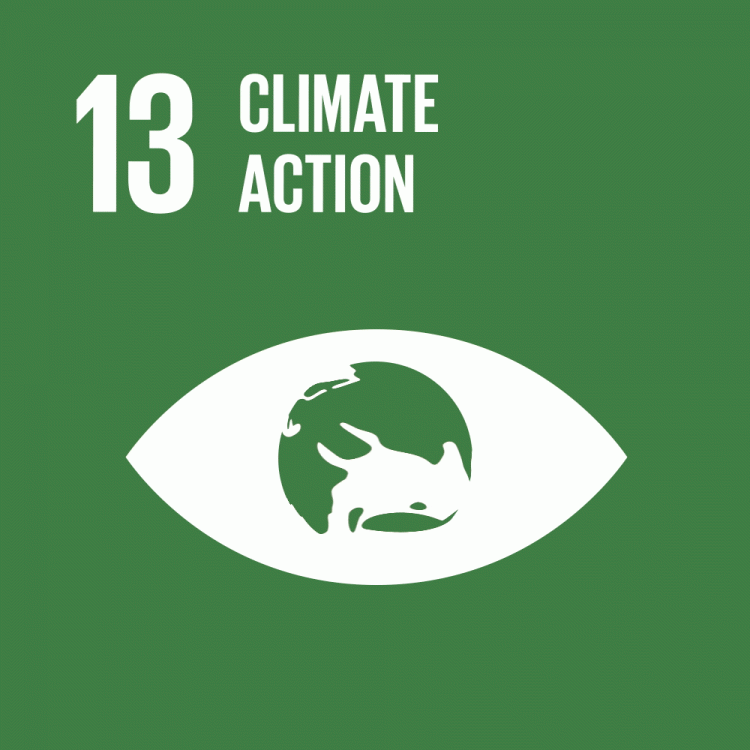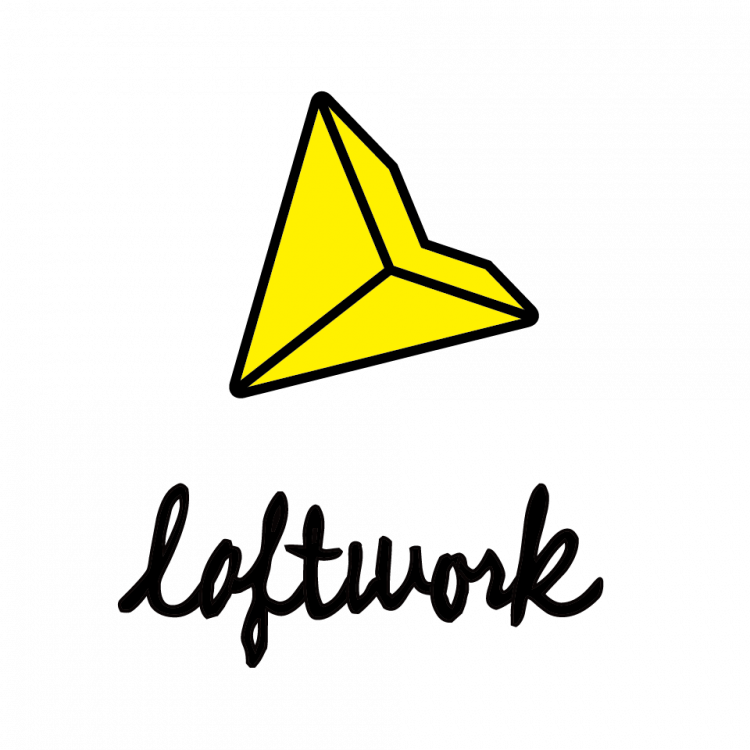Workshop
- #Finished
- #Online Event
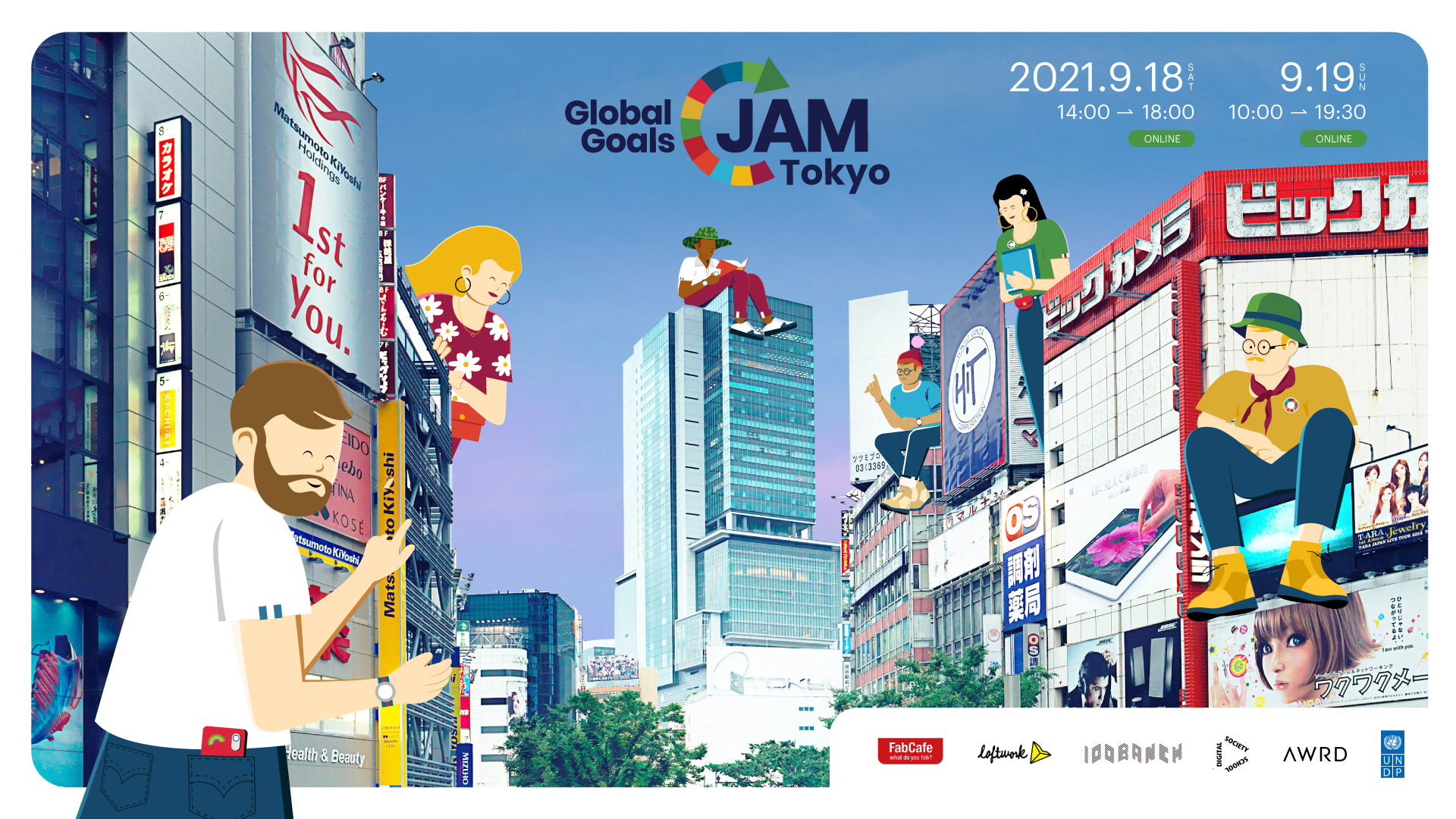
Calling All Changemakers! Join us for the fifth Global Goals Jam Tokyo where we will use design thinking and prototype with local players to create local interventions aimed at tackling the Sustainable Development Goals.
This year's theme is "Regenerative Cities": How might we create a more healthy and sustainable relationship towards nature? How do we close the loops of our urban systems and communities?
Can Tokyo, the largest city in the world, stand up to the challenge of becoming a regenerative city?
Sat, September 18, 2021 – Sun, September 19, 2021 UTC+09:00
*Zoom doors open at 1:30PM JST on Day 1
Online Session
25
¥1,000 (Students), ¥1,500 (Non-students) *Price includes limited edition GGJ Tokyo Goods!
👆Click here to signup via Peatix 👆
Do you have a passion for solving social challenges to improve lives? Do you want to leverage your skills and ideas in a diverse and high-energy setting to identify and attack issues in sustainability and inequality?
Join us for the fifth edition of the Global Goals Jam in Tokyo, Japan, where local innovators, entrepreneurs, and creatives will join teams in over 200 cities around the world in designing actionable interventions toward achieving the Global Goals.
The Global Goals Jam is a two day designathon where creative teams work together on local challenges related to the Sustainable Development Goals. Using a tailored design thinking toolkit (the “Jamkit”), we will create interventions aimed at short term targets in support of the long term goals.
What’s the theme for this year’s GGJ in Tokyo?
“The Regenerative City, Tokyo”
Tokyo is a modern metropolis that has been repeatedly transformed through a series of drastic yet remarkable historical moments, most of which have occurred in the length of a single lifetime. The 1923 Great Kantō Earthquake destroyed approximately 45% of early modern Tokyo; another urban reset came after more than half of Tokyo was diminished by the firebombing of American B-29 bombers in 1945.
Tokyo’s urban regenerative prowess was presented to the world’s stage only two decades later, in preparation for the 1964 Tokyo Olympic and Paralympic Games. Tokyo went from being a city with virtually zero old buildings or mobility options to boasting several world-class gymnasiums as well as a billion dollar 130-mile-per-hour bullet train that cut the time from Tokyo to Osaka in half!
The preparations for the Tokyo 2020 Olympic and Paralympic Games has once again shined light on Tokyo’s ability to transform in response to a global sporting event. A number of design interventions have been deployed to make the 2020 Tokyo Olympic and Paralympic Games move towards a carbon zero event. But are cardboard beds for athletes and Olympics medals made of recycled cell phones enough?
Can Tokyo, the largest city in the world, stand up to the challenge of becoming a regenerative city?

In a regenerative city, all stakeholders, including the people in the city as well as non-human living creatures, mutually benefit from a restorative relationship with the natural systems around it.
A regenerative city goes beyond the goal of an “eco-friendly” city. In a regenerative city, interventions are implemented which actively improve the environment, not just maintain it, while generating the natural resources on which the city dwellers depend on.
Key design challenge questions to this year’s GGJ Tokyo theme include:
- How might we create a more healthy and sustainable relationship towards nature in the city?
- How do we close the loops of our urban systems and communities?
- How might we design our cities as ecological systems, so that they not only become sustainable but actively contribute to a thriving planet?
GGJ Tokyo 2021 Target SDGs
Every year, Global Goals Jam Tokyo selects three areas from the SDGs which are related to the theme as regional issues and tackles them. These are the three focus SDGs at this year’s GGJ Tokyo:
GENERAL INFORMATION
The Global Goals Jam 2021 will be an ONLINE event using Zoom and Miro.
Date, time:
DAY 1: Sat., Sept. 18, 14:00-18:00 (Zoom will open from 13:30)
DAY 2: Sun., Sept. 19, 10:00-19:30*
*There will be an optional “after party” following the presentations.
✅ Language: The program will be run primarily in English. Japanese support can be provided.
✅ Cost: ¥1,000 for students, ¥1,500 for non-students
✅ How to sign up: Registration Page is here👉!
✅ What to prepare?:
・A free Zoom and Miro account
・Stable Wifi-network, a quiet workspace
・Computer or tablet
・Comfortable clothes, shoes
✅ What comes with the ticket?:
・Entry to the 2-day GGJ online event
・GGJ Tokyo Goods packet
・A warm welcome to an international community of creatives, thinkers, designers, and entrepreneurs who are passionate about sustainability and making social impact
Recommended for:
・People who want to take action on global sustainability and social impact goals
・People who want to try out design thinking in small collaborative teams to develop an idea they care about
・People who want to join a global community of people who are passionate about sustainability and social impactJoin us and #design2030now!
How do we create our challenge and solution idea?
The Design Method Toolkit by Digital Society School.
-

-
In 2016, United Nations Development Programme approached the Digital Society School to create a collaboration that connected the design community with the Sustainable Development Goals. Using their expertise in Design Methods and international, cross cultural collaboration, the Digital Society School customized their Design Method Toolkit to create an open-source Jamkit. These design thinking tools empower Jammers to go from challenge to idea and from an idea to a solution!
What is the output?
The output of the Global Goals Jam is a visual or rough prototype.
Examples of a visual prototype include…
1. A wireframe, mockup, or other clickable prototype.
2. A visual 3D model or rendering.
3. Video prototyping as a commercial or advertisement for the product or service.
4. A Storyboard, a sequence of drawings to represent how the service/product works.
5. A social media campaign, show the message and function of your prototype through a Facebook, Instagram Tiktok or other social media campaign
6. An art installation mockup
Here are some examples of past GGJ prototypes:
-
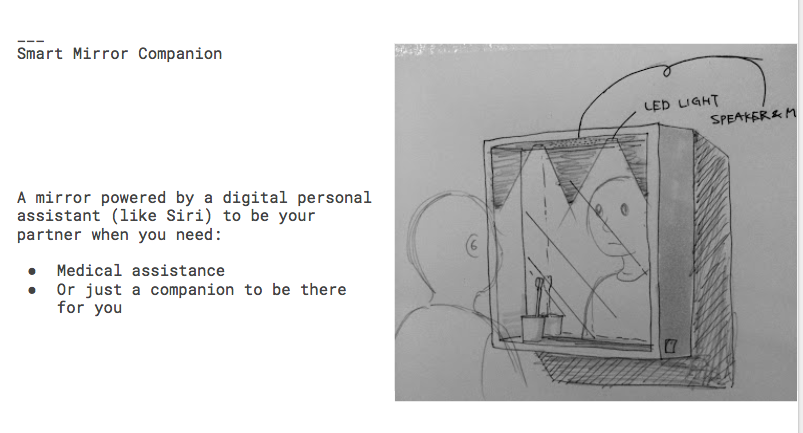
-
『Smart Mirror Companion』SDG #3 Good health and well-being, Video prototype; In Japan, there is a minority of people who are socially withdrawn and an increasing number of elderly people who experience difficulty to leave the home for their medical needs. The Smart Mirror Companion is a mirror powered by a digital personal assistant (like Siri) to be your partner when you need medical assistance, it can scan your temperature and ask you your health update to connect you with medical assistance, or just a companion to be there for you. (From GGJ Tokyo 2017)
-

-
『VitaSip』 SDG #12 Responsible Consumption and Production, Paper prototype plus advertisements: Approximately 50 billion paper cups in the US end up in landfills every year. These paper cups take more than 20 years to decompose, partly because 5% (the filming inside) is composed of plastic. How can we reduce un-recyclable single-used cups without changing consumer behavior? Introducing VitaSip, the very first vitamin and supplementary coated bagasse cup! By replacing the plastic coating with a biodegradable, vitamin coating, VitaSip paper cups are not only become recyclable but also offer the consumer the benefit of the vitamin or supplement! (From GGJ Bangkok 2019)
-

-
『#climbmywall』 SDG #16 Peace, Justice and Strong Institutions, Video prototype plus social media campaign. How might we create an experiential event to raise awareness and empathy while building a supportive platform to help asylum seekers in Hong Kong?
A rock climbing wall as a narrative, a symbol, an experience. Phase 1 brings together rock climbing gyms around the world to celebrate “International Refugee Day” in a new way. While climbing, participants learn through projection mapping and other interventions which tell the story of all the “walls” a refugee must climb. It gets increasingly difficult towards the top, and climbers can feel the pain and exhaustion “walls” that an asylum seeker must climb while empathizing with their story. (From GGJ Hong Kong)
For more GGJ Past Examples, please see last year’s Global Goals Jam Sprint #4 Share it! AWRD page 👉
You can also follow GGJ Tokyo on Instagram!👉

-
Date & Time
-
Sat, September 18, 2021 – Sun, September 19, 2021 *Zoom doors open at 1:30PM JST on Day 1 UTC+09:00
-
Venue
-
Online Session
-
Fee
-
¥1,000 (Students), ¥1,500 (Non-students) *Price includes limited edition GGJ Tokyo Goods!
-
Capacity
-
25
👆Click here to signup via Peatix 👆


